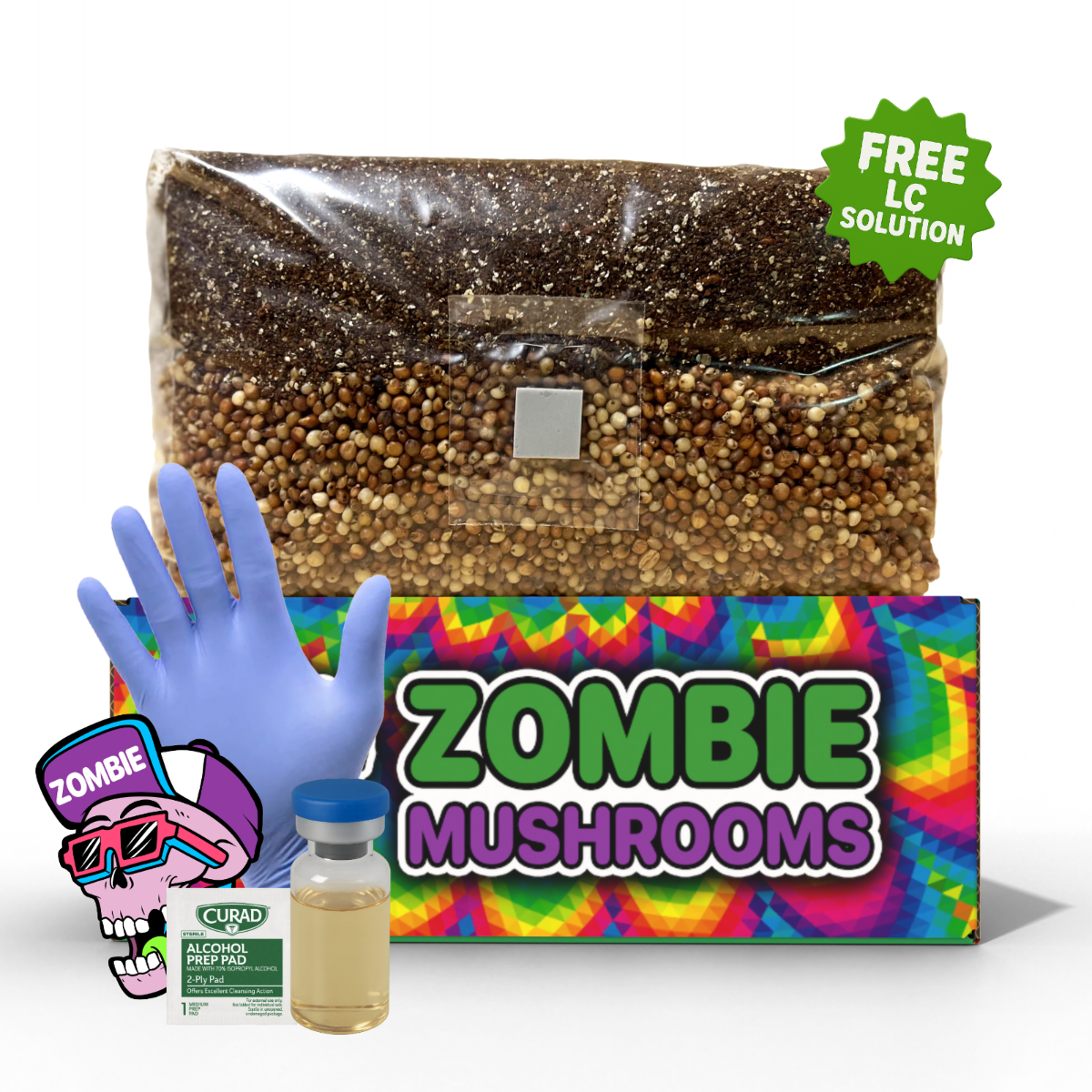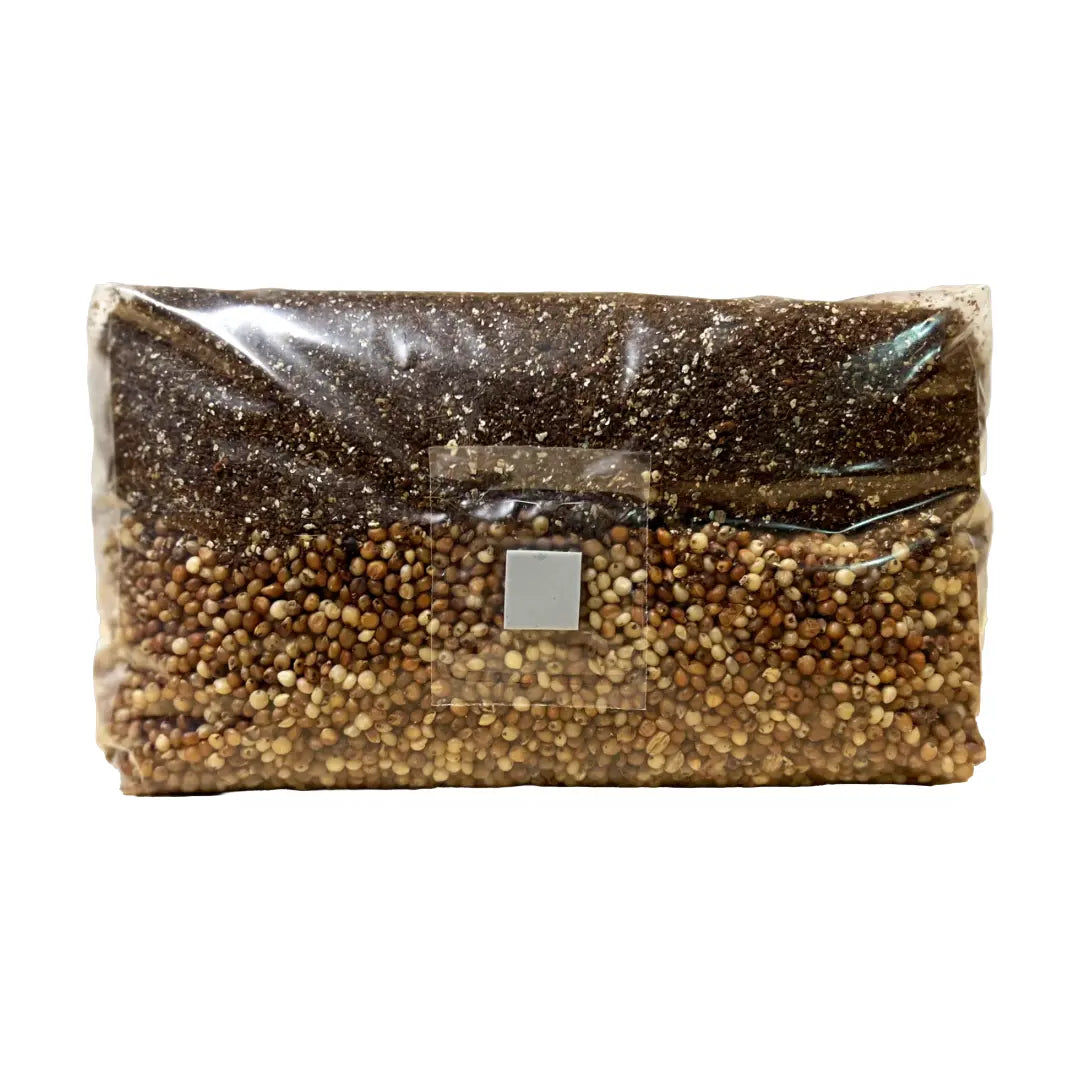- Cordyceps militaris presents similar advantages to Cordyceps sinensis but is considerably simpler and more economical to grow at home.
- Home-grown Cordyceps mushrooms flourish on substrates based on grain, removing the necessity for insect hosts.
- Keeping temperatures within 68-77°F (20-25°C) during colonization and 64-72°F (18-22°C) during fruiting is vital for good results.
- Correct sterilization and sterile methods are key to stop contamination and make the most of yields.
- Developed methods such as cloning high-yield strains and employing liquid cultures can greatly enhance Cordyceps cultivation effectiveness.
Understanding Cordyceps Mushrooms
Cordyceps mushrooms are special fungi that have been applied in old-style medicine for centuries. These parasitic fungi naturally develope by infecting insects, but luckily, current cultivation methods permit us to grow them without insect hosts. Wild Cordyceps sinensis, often called the "caterpillar fungus," is notoriously scarce and pricey, fetching costs as high as $20,000 per kilogram (Das & Varma, 2019). However, Cordyceps militaris, a related species, gives almost matching advantages and is much simpler to cultivate, making it the best choice for home growers when started with grain spawn bags.
Besides their rarity, Cordyceps mushrooms are broadly valued for their health advantages, including
- Boosting energy and stamina
- Supporting immune system function
- Enhancing oxygen use
- Providing antioxidant and anti-inflammatory qualities
By learning to grow Cordyceps mushrooms at home, you can enjoy these advantages at a lower cost than buying supplements or wild-harvested types.

Setting Up Your Cordyceps Cultivation Space
A controlled setting is vital for Cordyceps cultivation. These mushrooms need sterility, exact humidity, and temperature control. While a dedicated grow room or tent is best, a clean indoor space with stable conditions will be enough.
Essential Equipment for Growing Cordyceps
To successfully cultivate Cordyceps, you will need
- Pressure Cooker or Autoclave – Key for sterilizing the growing substrate.
- Sterile Jars or Grow Bags – Applied to hold the substrate and mycelium.
- Isopropyl Alcohol (70%) – Disinfects tools and work surfaces.
- Gloves and Face Mask – Helps keep sterility during inoculation.
- Thermometer and Hygrometer – Makes sure right temperature and humidity amounts.
- HEPA Air Filtration (Optional) – Lessens airborne contaminants.
- LED Light Source (Indirect Light) – Encourages fruiting by signaling environmental changes.
A somewhat enclosed space like a closet, shelf, or small greenhouse with minimal air drafts works best.

Preparing the Ideal Substrate for Cordyceps Cultivation
Cordyceps mushrooms get their nutrients from a carefully readied medium. While in nature they grow on insects, grain-based substrates work perfectly in cultivation.
Basic Cordyceps Substrate Recipe
For best growth, ready the following mixture
- 2 cups brown rice (finely ground for better colonization)
- 2 cups vermiculite (for moisture holding)
- 1.5 cups prepared liquid nutrient solution (a mix of water with small amounts of sugar and amino acids)
Sterilization Process
- Thoroughly mix the ingredients in clean, sterile containers (mason jars or grow bags).
- Cover with a breathable filter (micropore tape or filter patch).
- Sterilize in a pressure cooker at 15 PSI for 90 minutes.
- Allow containers to cool fully to room temperature before inoculation.
Sterilization makes sure a contaminant-free setting, lessening risks of mold and bacterial infections.

Inoculation: Introducing Cordyceps Spores to the Substrate
Once the sterilized substrate has cooled, it's time to add Cordyceps spores or liquid culture.
Sterile Inoculation Process
- Work in a clean, confined area, ideally using a laminar flow hood or still air box.
- Inject Cordyceps militaris mycelium or liquid culture into the sterile substrate at about a 10% spawn-to-substrate ratio.
- Seal the containers and place them in a warm, dark space (68-77°F or 20-25°C).
Keeping sterility at this point is critical, as contamination can cause failed batches.

Colonization Phase: Allowing Mycelium to Grow
After inoculation, mycelium will start to spread all through the substrate over 2-3 weeks. During this stage
- Keep temperatures stable at 68-77°F (20-25°C).
- Keep humidity amounts at 80-90%.
- Avoid disturbing containers during colonization.
- Watch for contamination—mold growth (green, black, or fuzzy patches) shows failure.
Once the substrate is fully colonized, appearing as white, cottony growth, it's time to move to the fruiting phase.

Fruiting Stage: Encouraging Mushroom Formation
To induce fruiting, environmental conditions must be changed
- Lower the temperature to 64-72°F (18-22°C).
- Increase humidity to 80-90%.
- Introduce indirect light (12 hours on, 12 hours off) to mimic a natural day-night cycle.
- Make sure air exchange (filtered fresh air is best).
Within 1-2 weeks, Cordyceps mushrooms will begin developing into bright orange-red fruiting bodies.

Harvesting and Preserving Cordyceps Mushrooms
Cordyceps mushrooms are ready for harvest when
- Fruiting bodies are 3-6 cm in length.
- They have a rich orange-red color.
- Spores have not yet been released—harvesting earlier betters potency.
Drying and Storing Cordyceps for Long-Term Use
- Gently twist and pull the mature fruiting bodies.
- Dehydrate at ~95°F (35°C) until fully crispy.
- Store in an airtight container with desiccant packets to keep freshness.
Correctly dried Cordyceps mushrooms keep their potency for up to one year.

Troubleshooting Common Issues in Cordyceps Cultivation
Contamination (Mold Growth)
Cause: Poor sterilization or unclean work setting.
Solution: Make sure correct sterilization of tools, substrate, and setting before inoculation.
Slow Mycelium Growth
Cause: Low temperatures or dry conditions.
Solution: Keep temperatures inside the best range (68-77°F) and keep high humidity.
No Fruiting Occurring
Cause: Incorrect temperature or lighting conditions.
Solution: Lower temperatures slightly and increase showing to indirect light.
Weak and Thin Fruiting Bodies
Cause: Not enough nutrients or poor light showing.
Solution: Better substrate quality and make sure consistent light showing.

Advanced Techniques for Maximizing Cordyceps Yield
Experimenting with Alternative Substrates
Different grains like millet, sorghum, or oat flour can improve productivity.
Developing Liquid Culture for Faster Growth
Preparing your own liquid culture batches can decrease inoculation time and improve consistency.
Selective Cloning for Stronger Strains
Isolating and spreading the most strong fruiting bodies can better future yields.
Join the Growing Cordyceps Cultivation Community
Learning to grow Cordyceps mushrooms at home is a satisfying thing that gives a natural and lasting way to enjoy this powerful medicinal fungus. By following correct methods and troubleshooting common issues, you can cultivate high-quality Cordyceps while lessening contamination risks.
Are you ready to start your own Cordyceps cultivation thing? Join online mushroom-growing communities to learn more, share experiences, and connect with other cultivators!
References
- Das, G., & Varma, A. (2019). Fungal Biotechnology and Bioengineering: Microbiology Insights and Applications. Springer.
- Huang, Y., Jiang, Y., & Chen, Y. Q. (2021). Cordyceps militaris: Bioactive Compounds and Their Potential Applications in Health and Agriculture. Frontiers in Pharmacology.
- Patel, S., & Goyal, A. (2012). Recent Developments in Mushrooms as Anti-Aging Agents. Journal of Food Science and Technology.
- Wang, J., Mazza, G., & Shen, J. (2015). Production, Composition, and Health Benefits of Cordyceps Mushroom Cultivation. Journal of Medicinal Fungi.



